-
Posts
719 -
Joined
-
Last visited
-
Days Won
1
Content Type
Profiles
Forums
Blogs
Gallery
Events
Store
Posts posted by Peter J
-
-
Thanks for the elaboration. I agree, who likes stretches, but I don't mind it in my collection
 As you can see, the wear is there .
As you can see, the wear is there . cheers
Peter

 0
0 -
I think you guys have a valid point about the lack of other decorations and I don't really know what to think.
Paul, I don't think the bar has been tampered with. Although there are visible scratches on the top of the prongs, the surface underneath is intact. But if your assumption is correct i.e. matching ribbons to the bar, what would two EK-ribbons signify?
I have limited knowledge in WW1 decorations and statues, but like to add a reflection on this topic. I'm not grasping straws in order to make this piece legit, but would like to here your comments.
From what I understand, the Hohenzollern Knights Cross was a rarely awarded piece and even PLM awardees didn't always recieve it. This awardee of this HKC also recieved the 1939 clasp (early type). Let's for the sake of discussion assume he started WW2 as an HQ-officer and recieved the EK2 for leadership, but no more decorations after that. I don't know if regulations called for all decorations awarded to be worn, but contemporary pictures clearly illustrate the absense of i.g. the EK ribbon in the 2nd buttonhole. However there's a excerpt from the Uniformenmarkt, where the LDO emphasize the importance of not wearing all kinds of decorations in an attempt to enhence one's qualities. Perhaps this awardee was a snobb and didn't want his HKC associated with a common HC. Now please be gentle with me

cheers
Peter
0 -
This is it Don. Should I be concerned over the missing decorations one would expect?
cheers
Peter
0 -
I've been having some problems lately accessing this great forum, here's one to celebrate my happy return

cheers
Peter
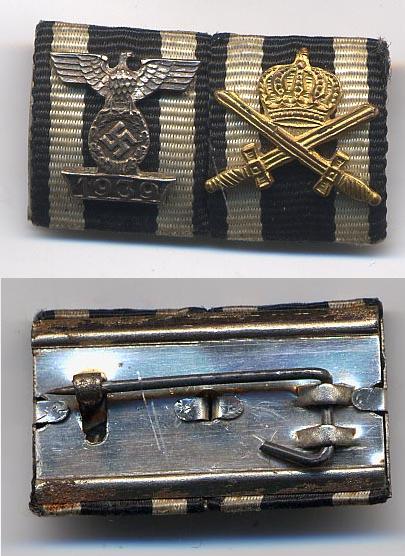
 0
0 -
Hi Michael,
I have no further information, but I assume it was given to distinguished individuals within the organisation. Perhaps you can find out more if you do a Google search.
cheers
Peter
0 -
Don, thanks for showing, the LW pin is a beaty

cheers
Peter
0 -
Hi Micha,
It a commemorative medal for the 50th anniversary of the UPU (Union Postale Universelle) World Postal Union.
cheers
Peter
0 -
Quote from the article:
"Von einiger zeit wurde mir von einem Sammler ein Bild, bsw. ein Abzug von enem Originalbild zur Verf?gung gestellt, welches einen Soldaten der Division "Hermann G?ring" zeigt!! Dieser tr?gt unter anderem auch eine Nahkasmpfspange der Luftwaffe. Dies ist vohl erstmals eine Fotografie, welche dokumentiert, dass die Nahkampfspange der Luftwaffe auch noch ausgeh?ndigt und getragen wurde."
As we all know, a lot of things can happen in 7 years and apparently Herr D?rr has revised his previous view. I don't know if these findings are correct or not, but I thought it would be interesting for this forum to know.
cheers
Peter
0 -
For the record, this one is not identical to the clasp in the article, which has triangular holes and two rivets on the reverse.
cheers
Peter
So that we?re all on the same page, here is an example of the common fake clasp available out there.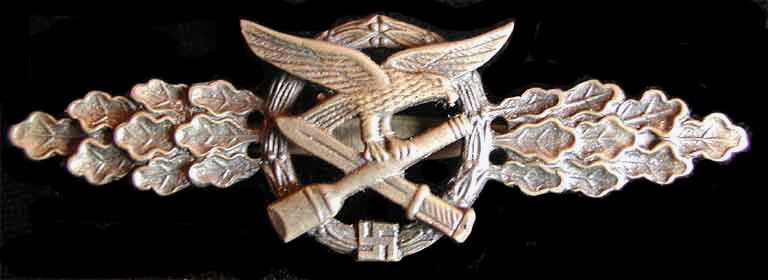
As Mark says, being instituted, entries in soldbuch/wehrpass made and urkunde issued does not necessarily mean that the award was ever presented. This being the same for the ?Sea Battle Badge-Seekampfabzeichen der Luftwaffe? and ?Tank Battle Badge-Panzerkampfabzeichen der Luftwaffe.?
If any of these late war badges were presented they would be in very low numbers and extremely hard to find.
To date, there is no evidence that any of these badges were ever presented? and if one were to find an example that looked good, what would you compare it to.
 0
0 -
There was an article in IMM (Oct. 2003) by Manfred D?rr showing two Pr?fst?ck in silver, as well as one photo of a LW soldier with the CCC LW. Personally I find it difficult to positively indentify the badge as such, considering the poor image, but in combination with an Erdkampfabz. it makes sense. Mind you, I'm just the messanger

cheers
Peter
0 -
I hear you Joe, the search goes on

cheers
Peter
0 -
Thanks for the input gentlemen

cheers
Peter
0 -
Thanks Paul, I've just illustrated my ignorence
 . Should have known it was too good to be true
. Should have known it was too good to be true 
cheers
Peter
0 -
Perhaps this is not the correct forum for these two military civil pins, but I thought they would bring more attention here.
The LW pin is made of "kriegsmetall" and the Heer pin is nicely die-struck tombak. Both are un-marked.
cheers
Peter
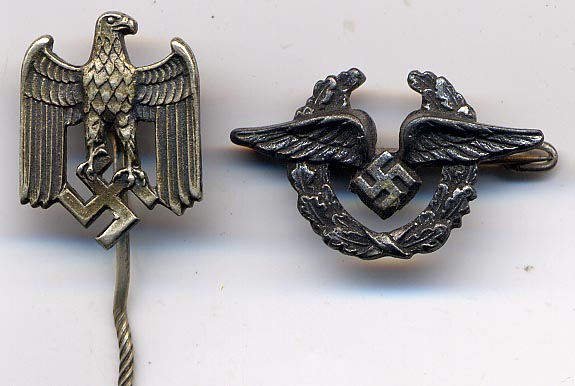
 0
0 -
I trying to figure out what type this Milit?rverdienstkreuz is. The Kronenorder is for comparison (14.5mm).
chers
Peter
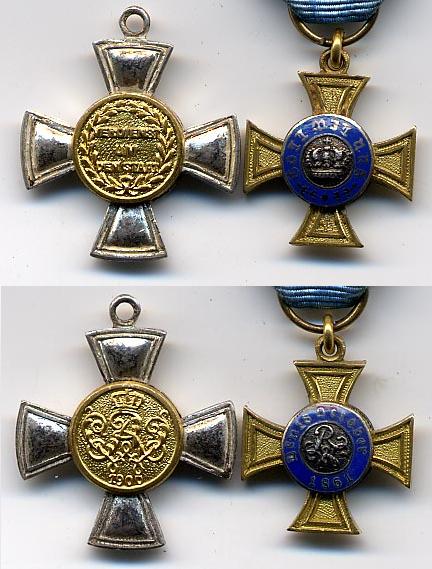
 0
0 -
Indeed, here's a sample for the Marine buffs

cheers
Peter

 0
0 -
Rick, the first issue came in Juli 1915 when this series of magazines were offered for subscription (2 DM) and single issues (3 DM). Due to inflation, the price increased in 1917 to 3 and 4 DM. Another 10 issues came in 1916. In 1917 only 5 were issued. There might have been more in 1918, but I have only 4 issues, which correspond roughly with the 1917 edition.
It will take me some time to go through all of them, but there are a lot of photographs showing individuals i.g. 52 submarine officers!!


cheers
Peter
0 -
David, I haven't had a chance to go through all of them yet, but I'll keep my eyes open and update you later on.
cheers
Peter
0 -
Here's a nice set of 29 WW1 magazines, including two of the stiff covers. Each copy covers a specific topic i.g. Somme-Schlacht or Ostfront 1916 and features excellent photograps.
cheers
Peter
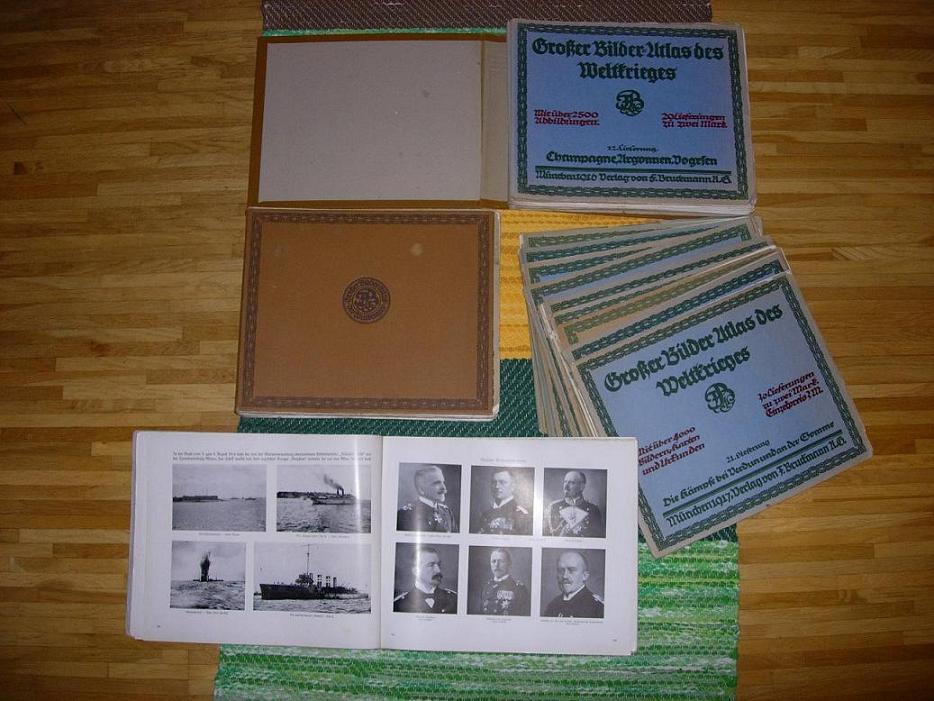
 0
0 -
Hi Claudio,
If in gold, this cross should be marked 18K on the bottom arm. The medal-ring might very well be the original, the ribbon-ring is not from a Swedish manufacturer.
cheers
Peter
0 -
Hi Pete,
Nice pin you've got there
 . I managed to dig out this thread for you, also showing another donation-pin.
. I managed to dig out this thread for you, also showing another donation-pin. http://www.wehrmacht-awards.com/forums/sho...ight=gothenburg
I don't have access to my reference-books right now, but the year-mark (O8) is probably 1940, considering the events surrounding this pin.
cheers
Peter
0 -
John, that's of course one possibility. I thought perhaps some info could be found in vol.2 or 3 in Angolia's LW book, similar to the info presented in his 2nd vol. of the Heer. I started a thread on the subject of these badges, intrigued by the contraditctive info presented in various publications. After additional book purchases, I realize some of my assumptions were incorrect: http://gmic.co.uk/index.php?showtopic=20510
It's easy to get lost in all these dates and badges. As you'll notice in that thread, a reference was provided from Bender's LW book regarding the introduction of this badge i.e. Nov. 1937. However he claims it was worn exclusively by paid employees of the RLM, which I find hard to believe. The corresponding Heer badge, which was introduced in 1936, was for wear on civilian clothes. The regulation for wear on and off duty in occupied countries did not come into effect until 1 Okt. 1941. The same order of that date required all civilian members of the Wehrmacht to wear the newly introduced badge for "Wehrmachtgefolge", provided they were not alloted a uniform or had to wear the civilian badge. I guess there is always new info to be found, but for the time being, I believe I stick to the Heer-scenario regarding the LW badges, due to the following:
The collective term "Gefolkschaftsmitgleider" was used by all three branches from 1935. If the Heer introduced it's badge in 1936, I see no reason why LW had to wait another two years.
Nor do I find it plausible that the civil badge was introduced in conjunction with the Anschluss in March 1938. The gold version is supposed to be for 25 years faithful service, but the Treue Dienst Ehrenzeichen was instituted in Jan. 1938!
Additional input is greatly appreciated

cheers
Peter
0 -
"Although similar in design to the M1938 lapel badge worn by civilian members of Luftwaffe/armed forces in occupied countries, these badges are (IMO) fantasy pieces based on the civilian retinue badge (below)"
Hi John,
I have one comment about this badge and it's connection to occupied territories. This was valid for the Wehrmachtgefolge-badge, worn exclusively during the years of war and outside Germany, also for the civilian badge during that period, as well as certain duties within the borders of the Reich. However the civil badge was also a domestic badge in the pre-war years.
Unfortunately I have only the 1st volume of LW, but all three of the Heer. They offer a good account for the corresponding Heer badge and I would assume the badges of both branches were instituted at the same date (please correct me if I'm wrong). The Heer badge for civilian workers in silver was instituted 30 April 1936. The gold version was for 25 years service. However the gold version was discontinued in 1938 when the Treuedienstehrenzeichen was introduced. Consequently I find it difficult to believe the LW version is a M1938, based on my formentioned assumption.
cheers
Peter
0 -
For interested parties, the concept Wehrmachtgefolge is comprehensibly described in "Uniforms & Traditions of the Luftwaffe" by Angolia/Schlicht vol.1, page 143.
cheers
Peter
0




2-piece ribbon bar
in Germany: All Eras: The Iron Cross
Posted
Hi Rick,
I appreciate your input. The device gallery is outstanding, but unfortunately there is only one 1st pattern for comparison. I noticed one major difference on my device, compared to other 2nd pattern devices I have i.e. the oakleaves are shallow instead of "bulky". It was hard to tell about the one in the gallery, perhaps mr L. elaborate . My device is die-struck and has remnants of silver. The height is 12.80mm and the 2nd pattern 11.09mm.
. My device is die-struck and has remnants of silver. The height is 12.80mm and the 2nd pattern 11.09mm.
cheers
Peter